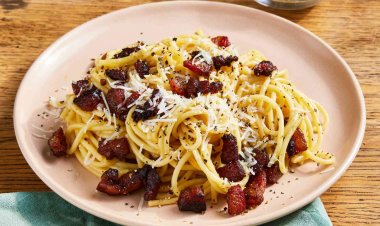Blanching A Quick and Effective Cooking Technique
Blanching is a cooking technique that involves briefly boiling food, usually vegetables, and then quickly cooling them in ice water. This method helps preserve the vibrant color, texture, and nutrients of the food while also making it easier to peel or prepare for freezing. Ideal for enhancing the flavor and maintaining the freshness of your favorite produce, blanching is a simple yet effective way to elevate your culinary creations. Perfect for meal prep or adding a pop of color to your dishes, this technique is a must-try for any home cook.

Blanching is a cooking technique that involves briefly immersing food in boiling water or steam, followed by plunging it into ice water. This method is often used to preserve the color, texture, and nutrients of vegetables, fruits, and certain meats.
Benefits of Blanching
Blanching offers several advantages over other cooking methods:
- Preserves color and texture: Blanching can help to retain the vibrant color and crisp texture of vegetables.
- Stops the cooking process: Blanching can be used to stop the cooking process, allowing you to finish cooking the food later.
- Removes impurities: Blanching can help to remove impurities and pesticides from certain foods.
- Prepares for freezing: Blanching is often used as a preparation step for freezing vegetables.
Blanching Techniques
There are two main techniques for blanching food:
- Boiling water: The food is immersed in boiling water for a specific amount of time, then plunged into ice water to stop the cooking process.
- Steaming: The food is steamed until tender, then plunged into ice water.
Foods Suitable for Blanching
Many types of foods can be blanched, including:
- Vegetables: Most vegetables can be blanched, including broccoli, carrots, spinach, and asparagus.
- Fruits: Some fruits, such as peaches and tomatoes, can be blanched to remove the skin.
- Nuts: Blanching nuts can help to remove the bitter skin.
Blanching Times
The blanching time will vary depending on the type and size of the food. As a general rule, smaller vegetables will require less blanching time than larger vegetables. Here are some approximate blanching times:
- Broccoli florets: 1-2 minutes
- Carrots: 2-3 minutes
- Spinach: 30 seconds
- Asparagus: 2-3 minutes
- Peas: 1-2 minutes
Tips for Blanching
- Use a large pot of boiling water: Ensure that the water is vigorously boiling before adding the food.
- Don't overcrowd the pot: Avoid overcrowding the pot, as this can lower the temperature of the water and prevent the food from cooking evenly.
- Shock the food immediately: After blanching, plunge the food into a bowl of ice water to stop the cooking process.
- Pat the food dry: Pat the food dry with paper towels before using it in other recipes.
Blanching is a simple and effective cooking technique that can be used to prepare a variety of foods. By following these tips, you can ensure that your blanched food is cooked to perfection.










